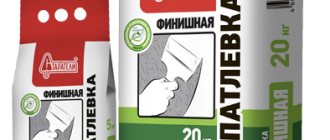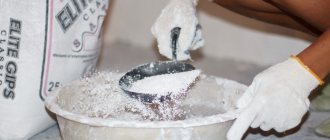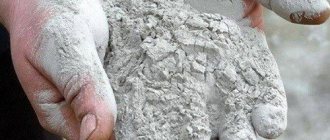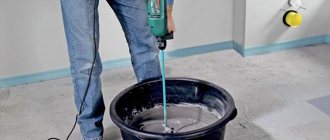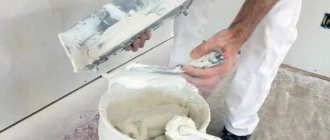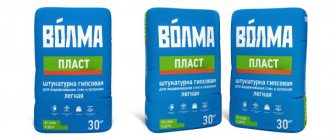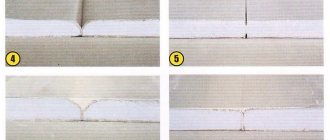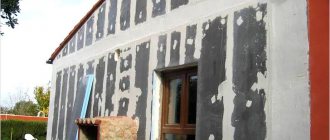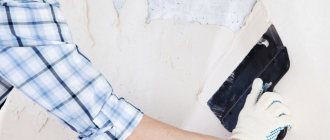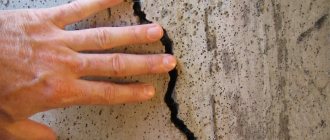Weber Vetonit LR putty: consumption, reviews, properties
When finishing putty is required, people most often choose products from Weber, whose popular product has become a mixture marked Vetonit LR. This finishing material is intended for interior work, or more precisely, for cladding ceilings and walls. But putty alone is not enough to create a high-quality coating. The process of its use has many nuances, which everyone who decides to use Weber Vetonit LR putty should know about.
Execution of work
The finished solution is applied to a previously prepared surface by mechanized or manual means. The putty solution is applied to the base and leveled using a two-handed steel spatula. When processing small areas, you can use a metal spatula 30 cm wide. If it is necessary to apply the material in two layers, you should wait until the previous one has completely dried. After application and drying, the surface is treated with sandpaper and removed from dust. And after all the work done and complete drying, the surface is ready for the subsequent application of decorative materials: painting, wallpapering, etc. , and can also be composed in the form of a “fur coat” after the mechanized spraying method.
Vetonit - characteristic features
Vetonit putty occupies a special place in the market of mixtures for leveling walls and other surfaces. There are several varieties of this material.
LR
This mixture is intended for applying the finishing layer. This putty is not suitable for leveling surfaces, but can act as a decorative finish.
Vetonit LR putty is intended for use in dry rooms. It is a finishing putty that is applied before further wallpapering.
The composition of the mixture is quite specific, so it cannot be used to level surfaces with large uneven areas.
The mixture is available in the form of a powder, which must be diluted with a certain amount of liquid, and also in the form of a ready-made mixture, which can be worked with immediately. Here's how to dilute putty.
Vetonit LR
The consumption of Vetonit LR putty is 1.2 kg per square meter. It is worth noting that this standard is the same for all dry mixes from a given manufacturer.
But in practice, everything can turn out differently, because the method of applying the putty, as well as the thickness of the applied layer, plays a significant role.
For more information about Vetonit LR putty, watch the video:
Application of KR putty on walls
This mixture is made on a gypsum basis, and it is intended for work in rooms where there is no humidity.
KR
It is also used more for decorative purposes.
How to calculate the consumption of TT putty on a calculator
It is made on a cement base.
TT
This putty is used to level a wide variety of surfaces - floors, ceilings, walls, etc.
Its quality characteristics allow you to work with it in almost any room.
The consumption of Vetonit putty will depend on a variety of circumstances:
- type of mixture. The consumption of TT index putty will be higher than the consumption of gypsum-based putty. And the consumption of Vetonit LR putty per 1m2 will be less than the amount of gypsum putty used (KR index);
- the specifics of the work itself. The thickness of the layer of ready-made mortar for leveling surfaces will be greater than for decorative finishing;
- surface characteristics. If there are a large number of cracks and seams on the walls and ceiling, this naturally increases the consumption of the mixture;
- number of layers applied. Experts recommend applying at least two layers.
If we talk about average values, then the consumption of Vetonit putty per 1 m2 is from 1 to 1.3 kg. This indicator is also influenced by the method of applying the mixture. If you use a regular spatula to putty walls, the consumption will be high, but if you use a special sprayer, the consumption will be reduced.
The use of this device is possible only with a certain type of putty.
It is worth noting that we are talking about the consumption of dry mixture with a layer thickness of 1 cm.
Considering that experts advise applying at least two layers, the consumption of the finished solution applied to the surface will be exactly doubled.
To accurately determine the consumption of Vetonit putty per 1 m2, you can use the calculator, which is located on the manufacturer’s official website.
There are several main advantages that make Vetonit putty one of the most popular mixtures:
- the finished mixture adheres well to the surface;
- with the exception of gypsum putty, Vetonit can be applied to almost any surface;
- resistance to moisture;
- The applied layer dries quickly enough. Here we talk about how long it takes for the putty to dry.
Types of self-leveling floor
At the moment, the manufacturer’s catalog includes 8 types of Vetonit self-leveling floors. They separate products for the base layer and topcoat, there is also one 2 in 1 option. They are compatible with heated floors, simple and automated. Any of them is applicable in rooms with high humidity.
Universal mixtures
Vetonit fast 4000
Creation of a layer from 5 to 80 mm at a time. The mixture is made using two-in-one technology - screed and finish. It is good to lay common floor coverings, such as laminate, on such a surface.
The tensile strength is 18 MPa, which allows the mixture to be used for repairing rooms with moderate traffic. Compression of the mixture after drying by 0.4 mm/m. Operating time – 30 minutes, sets after 4 hours.
Vetonit 4100
Self-leveling floor, which has high strength, does not crack under strong impact. Leveling layer – from 2 to 30 mm. Waterproof and flame retardant.
An ideal base for laminate, parquet boards or tiles. Withstands heating from heated floors. Designed for use in apartments, shopping centers, offices and high-traffic areas.
Mechanized application is possible. Use time – 30 minutes, after 40 minutes the floor can withstand walking, the second layer is applied a day later. After a week or more, the final coating can be laid.
Bending resistance – less than 6 MPa, consumption 1.5 kg per m2. Compression is less than 0.5 mm.
Options for finishing layer
Vetonit 3000
The coating layer is up to 5 mm, creating an absolutely flat surface. A distinctive feature is the filler in the form of finely ground marble. Used for local repair of cracks with a depth of no more than 10 mm.
Vetonit finish level
Leveling with a mirror effect, under parquet boards, natural parquet or laminate. They work with it exclusively by hand.
Suitable for premises for various purposes. Tensile strength – 18 MPa, bending strength – 4 MPa, coating decreases by approximately 1 mm/m.
Vetonit 3100
An option for creating a smooth floor without flaws. Suitable for sealing cracks up to 20 mm deep.
Dilution and filling can be done manually and with special mechanical tools.
Withstands moderate loads and low indoor traffic. Consumption – 1.6 kg for a layer thickness of 1 mm.
Special blends
Vetonit Fast level
The main difference is the quick-hardening composition. The thickness of the poured layer is from 3 to 60 mm. The solution does not harden for about 40 minutes; after 3 hours it hardens to the point that it can be walked on.
The flooring can be laid every other day. Application is by hand only. Can be used as a base for any floor covering.
It can be poured onto a subfloor made of concrete, gypsum or cement-sand composition.
Withstands moderate load. Withstand mechanical stress – 15 MPa, bending strength – 3 MPa, floor shrinkage up to 0.4 mm per meter.
Vetonit strong
Reinforced floor, reinforced with fiber fiber, which actively protects against cracks. Convenient due to good spreadability and self-leveling formula.
Suitable for layer 10-50 mm. The product can be used to screed any foundation, including monolithic and floating.
The main purpose is to repair wooden floors and bitumen bases. Further actions to repair the premises should begin no earlier than after 1 week, work with tiles - after 3-7 days.
Vetonit 4350
Suitable for soundproofed floors. It has increased resistance to bending, its strength is less than 4 MPa, and is resistant to cracking and wear from any external influences due to fiber reinforcement.
Both manual and mechanical application are possible. Layer thickness – from 10 to 50 mm. Types of screeds: on a separating layer, “floating” with insulation of heat and sound. Compressive strength - less than 16 MPa, shrinkage - less than 0.3 mm after complete drying.
Instructions for use
In order for the leveler to be a good base for the finishing material, the technology is carried out according to all the rules. The instructions consist of several step-by-step steps.
Preparation
Initially, inspect the base. It is cleaned of debris, dust and dirt. Remove all objects from the room and sweep the floor. To prevent dust from settling on the walls and ceiling material, it is better to use an industrial-type vacuum cleaner.
A few hours before leveling, you need to treat the surface with a primer. You can use Vetonit MD16 or Prim Multi primer. You can apply the primer with a brush, although it is more convenient to use a roller.
Preparation
When preparing the working solution, you need to take into account that the manufacturer’s data is approximate. Sometimes, instead of 3.5 liters, 2.8-2.9 liters of water are used per bag of dry mixture. Pour water into a clean container and pour the powder composition into it (not vice versa). The mixture is stirred until a homogeneous mass is formed. To do this, use a construction mixer.
It is worth considering that the more you stir, the shorter its lifespan will be. This rule applies to all plaster and leveling mixtures. If there is a lot of water, this will cause cracks to appear during drying and operation, while the strength of the solution decreases, which will affect the service life. It is undesirable to work with the composition after a certain period of time.
Alignment
Before starting installation work, close the windows and doors - drafts must not be allowed to form during the work and when the Vetonit 5000 composition dries. To carry out the installation correctly and efficiently, turn off the heating of the “warm floor” two days before the leveling. The prepared solution is laid out on the floor surface and immediately stretched. The thickness of the layer depends on the existing height difference. To ensure that the surface is perfectly smooth, it is trimmed using a rule and, if necessary, polished with a special grater.
Seams
There are cases when a quick-drying mixture is used under tiles without additional leveling. In this case, after a few hours, expansion joints are made on the surface. This can be done when the surface has hardened and walking on the coating is allowed.
If the seams were originally on the old base, then they can be moved. If they are absent, it is necessary to cut squares with a side of 6 m along the edges. The depth of the seam on average should be 1/3 of the thickness of the screed used.
Finish coating
If you plan to lay tiles or porcelain tiles on top, the seams must be filled with a special sealant for expansion joints. Before laying, waterproofing must be done. When you plan to lay a thin-layer floor covering, for example, linoleum, work can begin within a day from the moment the leveler is applied. The same applies to self-leveling floors. Ignoring the drying time will lead to shrinkage and deformation of the leveling mixture.
Varieties
Depending on the purpose, the putty can be:
- leveling, which is applied to concrete or plaster before subsequent decorative finishing;
- for seams;
- for a surface that has already been previously painted.
Each of these types of putty is represented by the Vetonit brand under its own name and price.
- “Finish-LR+” and “Finish-KR” are used for work in dry rooms and are used for finishing walls and ceilings. The average cost of one package of such a mixture is from 650 to 700 rubles.
- Super-finishing “Finish-KR”, “JS Plus” and “LR-paste” are designed to give ideal smoothness at the last stage of finishing work, and “Siloite gyproc JS” putty is intended exclusively for grouting plasterboard joints.
- For work in rooms with high humidity, “Finish VH” is perfect at a price of 600-650 rubles per package.
- And for finishing facades, you should choose the “Rend Facade” mixture for 450 rubles.
Depending on the type, plaster is necessary in the following cases:
- complete alignment of ceilings and walls;
- leveling certain areas of the surface for subsequent finishing work;
- applying a decorative gypsum layer for further painting inside and outside the room.
The main purposes of self-leveling screeds are:
- creation of a “warm floor” system;
- creation of flooring on unheated balconies and terraces;
- creating screeds for subsequent decorative coating;
- leveling rough surfaces made of concrete or cement.
In addition to the above products, various adhesive mixtures are also presented on the domestic market. The price range for glue from Vetonit ranges from 200 to 1000 rubles, depending on the purpose.
- For example, the adhesive mixture “Profi Plus” is sold for working with porcelain stoneware, “Marble” for working with light tiles and “therm S100”, which is a universal material.
- All of them are used for interior work, and in order to glue building materials outdoors, it is worth choosing “Easy fix” or “Ultra fix”.
- For finishing the facade, you can purchase an adhesive mixture of the “Ultra fix winter” brand, and for working in rooms with high humidity, dry glue “Optima” is perfect.
- There are brands of adhesive mixtures with fairly narrow applications, for example, Vetonit MW is used only for joining slabs made of mineral wool.
Vetonit also produces mixtures for brick and stone masonry, primers and grouts, and even stove mixtures that can withstand high temperatures and are used for the construction of fireplaces and stoves. Colored cement grouts are perfect for finishing joints of various sizes, and for rooms with high temperature changes it is worth purchasing two-component epoxy compounds. On the shelves you can find all kinds of primers, paints, impregnations and antiseptics. So-called “dry concrete” is produced for pouring into molds.
